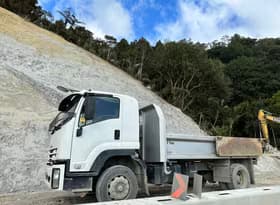Kiwis embrace a lower-plastic life
Plastic packaging is being talked about more than any other time since it was first invented. With single-use plastic bags now banned, and our ability to outsource soft plastic recycling overseas becoming less viable, there are some fundamental shifts occurring for New Zealand. With more efforts to switch to reusable alternatives, and a rethink about plastic recycling, we need to focus much more on how we manage our waste.
Plastic is abundant in modern day life. The ease at which they can be refined and manipulated into shape on an industrial scale is unmatched. Their inert properties and versatility make plastic the perfect material for creating anything from life-saving medical instruments, to the interior components of spacecraft. People have become increasingly reliant on plastic, even though early last century most people weren’t aware of what plastic was. Plastic has made many day-to-day tasks cheaper and easier, yet, the cheapest and easiest thing to do with plastic is to throw it out. Now the true costs of careless plastic use are catching up with us and attitudes are changing.
The rise of the reusable bag
New data from the General Social Survey (GSS) shows that reusable shopping bags are becoming common place. In April 2018, 70% of households reported having at least one person that usually took reusable bags with them when shopping (see Graph 1). This share has since risen, with 97% of households in March saying that at least one person usually takes reusable bags with them when shopping.
Graph 1
The banning of single-use plastic bags took effect on 1 July 2019, but even before the government announced the ban of single-use plastic bags in August 2018, consumers were changing their habits. This is a step in the direction towards a more circular economy. Consumer habits associated with the sustainable use of plastic will continue to change and industry is responding. Two key examples include the advent of compostable bioplastics for many packaging alternatives and Countdown’s new BYO container scheme for the deli section, after a successful trial in selected stores.
Who’s going to recycle our plastic?
Until recently New Zealand had been exporting thousands of tonnes of plastic each year to China, as our main plastic recycler. This recycling export changed at the start of 2018 when China banned imports of most plastic waste in attempt to clean up its environment. Before the ban, China was the world’s largest importer of used plastic. Without any capacity to deal with our plastic domestically, New Zealand turned to South East Asia as our new main waste export market, with Malaysia very rapidly becoming New Zealand’s top dumping ground. However, due to a lack infrastructure, time to adjust, and compliance issues from plastic waste exporters, it has been difficult for Malaysia to adapt to such large volumes of waste. Consequently, Malaysia has sent some shipments of plastic waste back to the developed countries where the waste came from originally. Unfortunately, South East Asia struggles with increasing ocean plastic pollution, with China, Indonesia, The Philippines, Thailand, and Vietnam contributing to more than half the world’s ocean plastic pollution. Fast economic growth has meant these countries’ demand for plastic has far exceeded their ability to manage their plastic waste, let alone waste from other countries.
The value of New Zealand’s plastic waste exports peaked in 2011 at over $25m (see Graph 2). Since then, the value of plastic waste exports has fallen below $10m, with China importing less than 10% of the value of used plastic from New Zealand than it did four years ago. The Tiger Cub economies (Malaysia, Indonesia, The Philippines, Thailand, and Vietnam) now takes 58% of New Zealand’s plastic waste exports by value, up from 22% five years ago.
Graph 2
A large part of the plastic waste issue is that the high cost of recycling low-value plastic doesn’t always make recycling worth it. Only two of the seven main categories of plastic are commonly recycled in New Zealand. The other five plastic types must be recycled overseas, but as international demand for low value used plastic dries up, our waste will increasingly start to pile up on our doorstep. New Zealand will need to improve its capacity to recycle plastic and find ways to avoid creating so much plastic waste to start with, if we don’t want more plastic ending up in the landfill.
What can we do to limit plastic waste?
“Reduce, reuse, recycle” is no longer enough in many consumers’ minds. Refusing to purchase plastic is another idea consumers are adopting, with many not wanting their produce wrapped in excessive or unnecessary packaging. Redesigning packaging is a particularly compelling idea to reduce plastic waste volumes. Substituting low quality plastic packaging for other plastic types that are more easily repurposed or for non-plastic materials will reduce waste. Finally, many are embracing the idea to “renew”, which moves away from petroleum-based plastic altogether and provides massive opportunities for how primary industries view their waste and will create completely new markets. For example, biorefineries can convert forestry by-products such as wood chips and bark into biopolymers, then manufacture these components into bioplastics. The global market for bioplastics and biopolymers was $6b USD in 2017 and is expected to grow by 17% annually to reach $15b by 2023, driven by increasing demand particularly in the packaging industry.
New Zealand has taken some steps towards improving onshore recycling in the wake of China’s waste import bans. In early 2019, the Manawatu District Council undertook an economic feasibility assessment into the development of a mixed plastic recycling facility. Results showed this facility would be both technically and economically feasible, with approximately 80% of mixed plastic from kerbside collection capable of being recycled into saleable products. The facility could service recyclable plastic within a 200km radius of Fielding and would encompass the Wellington Region, which currently has the second-worst waste diversion rate in New Zealand according to the Infometrics Regional Wellbeing Framework. Only 12.2% of all waste in the Wellington region is diverted away from the landfill. New Zealand’s total waste diversion rate in 2017 was estimated a much higher 40.1%.
Cheap plastics remain, but action is needed now
Synthetic plastic is still cheap, easy to produce, and fit for purpose – at least until that purpose is complete. Plastic is also incredibly convenient for consumers, so it isn’t surprising that it’s still a favourite amongst manufacturers.
Often, external economic factors are still the driving influence behind the use of plastic and our ability to recycle it. Synthetic plastic is derived from refined petroleum, so the price of crude oil affects the economic returns of manufacturing plastic. Crude oil prices also affect the viability of recycling, as low oil prices make recycling comparatively more expensive relative to producing virgin plastic. Whether or not a council decides to improve its recycling capacity depends largely on their budget, other projects, population density, and if other councils or countries place higher value on the waste.
The true cost of single-use plastic is catching up with us. Pressure from government and NGOs (both in New Zealand and internationally), the costs associated with environmental degradation, and changing consumer preferences are all going to change the way we use plastic, it’s just a matter of when. However, this impending shift provides an opportunity to rethink the real value of plastic waste. Technology is improving our ability to repurpose all kinds of waste. Recyclers can turn waste to wealth by reducing production costs and attracting market share as conscious consumerism grows.
 Andrew Beattie
Andrew Beattie












